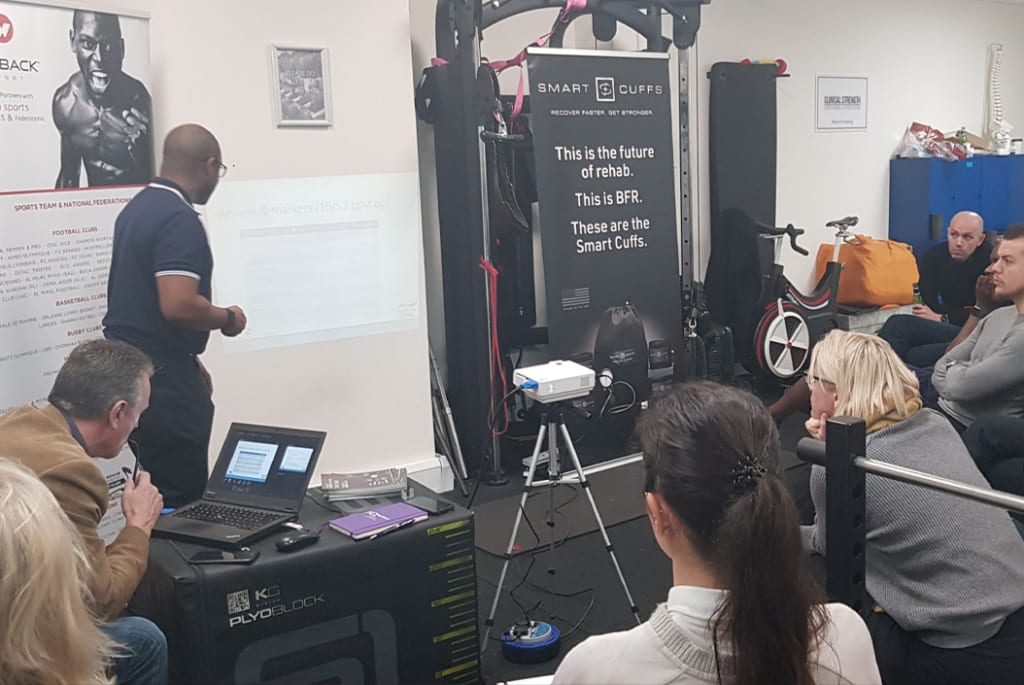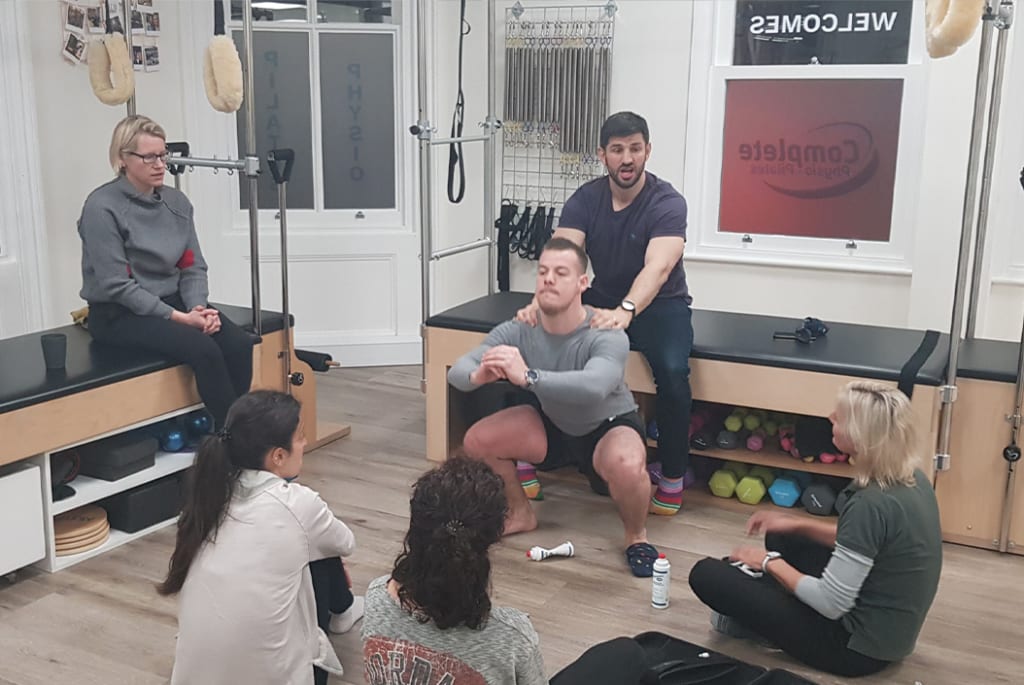What is blood flow restriction training?
Blood flow restriction training, is a training method that involves use of a pneumonic cuff (like the ones a doctor uses to take blood pressure) to alter the blood flow into your limbs while you perform certain exercises. This style of training was actually discovered in the 70’s by a man, Dr. Yoshiaki Sato, who had a full leg cast on after breaking his leg. For the 6 weeks that he had the cast on, he practised blood flow restriction training on his leg above the cast 2-3 times a day, and when the cast came off, he had maintained much of his muscle mass.

How does blood flow restriction training work?
By restricting blood flow on the limb using a cuff, we can reduce the amount of blood flowing out of the limb, but still allow blood to flow in. When we combine this with very light exercise/loading – such as lifting a light weight or even pedalling a bike, metabolites (what your muscles produce when they work) build up in the limb. This is beneficial, as BFRT “tricks” your body into believing it is working harder than it actually is due to the presence of the metabolites.

Gareth Ziyambi from British Diving presents at a recent BFRT professional development night at Complete Physio by Winback Medical
In a rehabilitation setting such as at our Complete Physio clinics, this is vitally important as it allows us to achieve muscle strength/growth while not stressing damaged or vulnerable tissues (e.g. An arthritic knee, fractured ankle or post-surgical or an ACL) but still get significant benefits.
Normally we would have to wait for these tissues to heal before being able to load them to achieve these benefits.
How does blood flow restriction training achieve this?
BFRT achieves these benefits by
- Increased release of Growth Hormone and lactate which drives muscle growth
- Increased Type II (a.k.a fast-twitch) muscle fibre activation which means increased muscle growth.
- Increased vascularisation of the tissue (i.e. more blood vessels) meaning your muscles are able to receive more oxygen. This improves cardiorespiratory performance and also means you recover from exercise quicker
- Increase heart rate which means there is a cardiovascular “cardio” training effect as well as the strength training effect

Action from a recent BFRT education night at Complete Physio by Winback Medical

Who can benefit from blood flow restriction training?
The 3 main populations we use BFR on in the clinic are;
Post-operative patients
Patient following an ACL reconstruction, Achilles repairs, knee replacements and many other operations. We want to get the muscles around the area working and strong quickly, but this is difficult without being able to put too much force through the area.
By using BFRT we can use low load, protecting the vulnerable area, but still significantly train the muscles around it.
Injured athletes (of all levels)
If you have an injured athlete and want to minimise time out of your sport, BFRT is a great tool.
While an athlete is injured and can’t put high force through the injured area, we can use BFR to get high training effect at low load meaning we protect the injured area but still keep it strong.
Older deconditioned people – especially those with ARTHRITIS
Blood flow restriction training is great for getting the muscles around arthritic hips or knees strong, but without causing joint pain.
BFRT is also ideal for your patients who have lost strength in their legs and struggle now to raise from a chair, or maybe a falls risk.
In both these groups of people, BFRT gets great muscle training benefits at low loads – meaning we won’t be irritating your arthritic joint.
Even just wearing the cuff at low pressure without exercise can be of benefit to those of very low strength or currently unable to move,

If you’ve read through the main information above and still have questions, below are some commonly asked questions from patients.
Commonly asked questions about blood flow restriction
Is BFR Safe?
In short, yes, BFRT is actually very safe, just as safe as regular strength training in fact.
But there are some people that cannot use BFRT, here’s a list of common things (not all things) that may exclude someone from being able to use BFRT
- History of cardiac or vascular health issues
- Severe varicose veins
- Pregnancy
- Active infection
- Wounds
Your physiotherapist will ask you many questions about your health prior to any BFRT to assess if it is appropriate for you.
Is BFRT painful?
You may well have seen some videos of people really pushing hard using BFRT and it looked very painful! But it’s not always like this.
BFRT can be very uncomfortable if used at high intensities, and yes, sometimes can be painful.
There does need to be some level of discomfort to drive change in your body.
We will always assess you individually and work to an intensity that is achievable and safe for you.
Will my muscles be sore afterwards?
On the rare occasion people will experience Delayed Onset Muscle Soreness (DOMS) but one of the great advantages of BFRT is generally there is a lack of muscle soreness meaning it can be used very regularly which is great in the rehabilitation setting.
Reece works from our physiotherapy clinics on Fulham Road (Chelsea clinic) and the city (Broadgate clinic). For more information or book in for a physio assessment and to find our if BFRT is an option for you, please email Reece direct on reece@complete-physio.co.uk.
At Complete Physio we strive to stay at the forefront of new treatment techniques to ensure we are offering our clients the most effective treatment options.
We recently hosted a Blood Flow Restriction Training (BFRT) CPD at our brand new Chelsea clinic on Fulham Road. Reece Noble one of our highly experienced rehabilitation physiotherapists, attended and shares his thoughts on the session below.
Reece’s has hopefully answered some common questions that we get asked about BFRT and outline how it may benefit you and many other patients.
Don’t let pain hold you back, book now!


